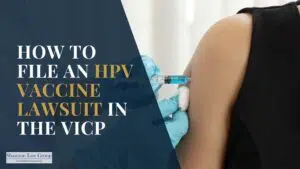
Bad faith failure-to-settle claims occur all over the country involving just about every insurance company writing casualty policies. Many arise from car accident claims, often where the at-fault driver/policyholder has low policy limits compared to the damages incurred by the injured claimant.
There’s the chance that a jury’s verdict could far exceed the limits of the applicable policy. However, we have seen far too many instances where the insurance company refuses to settle and puts its policyholder’s personal assets at risk of exposure to a financially crippling judgment.
What is a “failure-to-settle” claim?
An insurance company has a duty to give its policyholders’ interests in protecting themselves from an excess judgment as much consideration as its own interest in fighting the claim to a “not guilty” and paying nothing. This is the essence of most bad faith claims, at their core.
In the context of an excess verdict failure-to-settle claim, the insurance company often fails to give equal consideration to its insured’s interests in settling within policy limits and protecting their personal assets. It gives more consideration to its own interests in taking its chances at trial, however slim those chances may be, which may result in paying nothing.
This is a gamble that most policyholders simply cannot afford. In these situations, the policyholder will likely be able to pursue a bad faith claim against the insurer to recover the amount of the excess verdict.
Third-party failure-to-settle claims are the most common type of bad faith claim. Insurance companies can also be subject to bad faith claims arising from improperly handling “first party” claims brought directly by their policyholders, such as homeowners or health insurance claims.
The History Behind Bad Faith Insurance Claims
Legally speaking, the concepts behind bad faith claims originated from the rules of contract law. Since the early 1900s, our courts have almost universally found that in every contract, there is an implied covenant of good faith and fair dealing. This means that each party to a contract makes a promise to treat the other parties to that contract fairly.
The California Supreme Court defined it as a promise that “neither party will do anything which will injure the right of the other to receive the benefits of the agreement.”[1] The notion of bad faith claims arose in response to insurance companies’ violations of this principle.
For over 100 years, courts have recognized that ensuring the fairness and ethics of the insurance industry is in the best interest of the public as a whole. An insurer’s responsibility to its customers and to the public arises out of its role in holding money.
How insurance companies work
Insurance companies hold money in a fund for the benefit of their policyholders. The money is held to be paid out to those who suffer covered losses.
The insurer is entitled to a fee for collecting, administering, and distributing the funds in the account among the policyholders who need it. But the purpose of the insurance company is to maintain the collective funds of its policyholders for necessary claim payments.
A bank owes special duties to its customers because of the relationship of trust and confidence that is required to allow banks to hold our money. This is known as a “fiduciary” relationship.
Under these principles, banks owe certain duties to their customers and to the general public under the law. Insurance companies are similar in that respect.
The driving principle in most bad faith cases is that an insurance company may not place its own interests ahead of the interests of its policyholders.
[1] Communale v. Traders & Gen.Ins. Co., 328 P.2d 198, 200 (Cal. 1958).
Schedule Your Free Consultation Today



